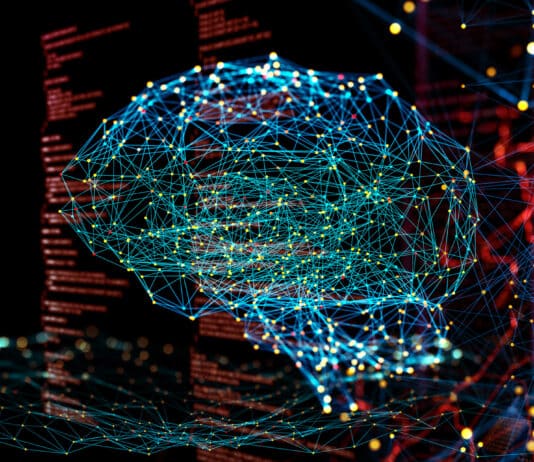While ML offers extensive benefits, it also presents significant challenges, among them, one of the most prominent ones is biases in ML models. Bias in ML refers to systematic errors or influences in a model's predictions that lead to unequal treatment of different groups. These biases are problematic as they can reinforce existing inequalities and unfair practices, translating to real-world consequences like discriminatory hiring or unequal law enforcement, thus creating environments of injustice and inequality.
The AI alignment problem sits at the core of all future predictions of AI’s safety. It describes the complex challenge of ensuring AI systems act in ways that are beneficial and not harmful to humans, aligning AI goals and decision-making processes with those of humans, no matter how sophisticated or powerful the AI system becomes. Our trust in the future of AI rests on whether we believe it is possible to guarantee alignment.
In the summer of 1956, a small gathering of researchers and scientists at Dartmouth College, a small yet prestigious Ivy League school in Hanover, New Hampshire, ignited a spark that would forever change the course of human history. This historic event, known as the Dartmouth Workshop, is widely regarded as the birthplace of artificial intelligence (AI) and marked the inception of a new field of study that has since started revolutionizing countless aspects of our lives.
The rapid development of AI brings both extraordinary potential and unprecedented risks. AI systems are increasingly demonstrating emergent behaviors, and in some cases, are...
Label-flipping attacks refer to a class of adversarial attacks that specifically target the labeled data used to train supervised machine learning models. In a typical label-flipping attack, the attacker changes the labels associated with the training data points, essentially turning "cats" into "dogs" or benign network packets into malicious ones, thereby aiming to train the model on incorrect or misleading associations. Unlike traditional adversarial attacks that often focus on manipulating the input features or creating adversarial samples to deceive an already trained model, label-flipping attacks strike at the root of the learning process itself, compromising the integrity of the training data.
Because it demands so much manpower, cybersecurity has already benefited from AI and automation to improve threat prevention, detection and response. Preventing spam and identifying malware are already common examples. However, AI is also being used – and will be used more and more – by cybercriminals to circumvent cyberdefenses and bypass security algorithms. AI-driven cyberattacks have the potential to be faster, wider spread and less costly to implement. They can be scaled up in ways that have not been possible in even the most well-coordinated hacking campaigns. These attacks evolve in real time, achieving high impact rates.
Model stealing, also known as model extraction, is the practice of reverse engineering a machine learning model owned by a third party without explicit authorization. Attackers don't need direct access to the model's parameters or training data to accomplish this. Instead, they often interact with the model via its API or any public interface, making queries (i.e., sending input data) and receiving predictions (i.e., output data). By systematically making numerous queries and meticulously studying the outputs, attackers can build a new model that closely approximates the target model's behavior.
A model inversion attack aims to reverse-engineer a target machine learning model to infer sensitive information about its training data. Specifically, these attacks are designed to exploit the model's internal representations and decision boundaries to reverse-engineer and subsequently reveal sensitive attributes of the training data. Take, for example, a machine learning model that leverages a Recurrent Neural Network (RNN) architecture to conduct sentiment analysis on encrypted messages. An attacker utilizing model inversion techniques can strategically query the model and, by dissecting the SoftMax output probabilities or even hidden layer activations, approximate the semantic and syntactic structures used in the training set.
Gradient-based attacks refer to a suite of methods employed by adversaries to exploit the vulnerabilities inherent in ML models, focusing particularly on the optimization processes these models utilize to learn and make predictions. These attacks are called “gradient-based” because they primarily exploit the gradients, mathematical entities representing the rate of change of the model’s output with respect to its parameters, computed during the training of ML models. The gradients act as a guide, showing the direction in which the model’s parameters need to be adjusted to minimize the error in its predictions. By manipulating these gradients, attackers can cause the model to misbehave, make incorrect predictions, or, in extreme cases, reveal sensitive information about the training data.
Neural networks learn from data. They are trained on large datasets to recognize patterns or make decisions. A Trojan attack in a neural network typically involves injecting malicious data into this training dataset. This 'poisoned' data is crafted in such a way that the neural network begins to associate it with a certain output, creating a hidden vulnerability. When activated, this vulnerability can cause the neural network to behave unpredictably or make incorrect decisions, often without any noticeable signs of tampering.
IntroductionTrustworthy vs Responsible AITrustworthy AIAttributes of trustworthy AI1. Transparent, interpretable and explainable2. Accountable3. Reliable, resilient, safe and secure4. Fair and non-discriminatory5. Committed to privacy...
Text Classification Models are critical in a number of cybersecurity controls, particularly in mitigating risks associated with phishing emails and spam. However, the emergence of sophisticated perturbation attacks poses substantial threats, manipulating models into erroneous classifications and exposing inherent vulnerabilities. The explored mitigation strategies, including advanced detection techniques and defensive measures like adversarial training and input sanitization, are instrumental in defending against these attacks, preserving model integrity and accuracy.
Batch exploration attacks are a class of cyber attacks where adversaries systematically query or probe streamed machine learning models to expose vulnerabilities, glean sensitive information, or decipher the underlying structure and parameters of the models. The motivation behind such attacks often stems from a desire to exploit vulnerabilities in streamed data models for unauthorized access, information extraction, or model manipulation, given the wealth of real-time and dynamic data these models process. The ramifications of successful attacks can be severe, ranging from loss of sensitive and proprietary information and erosion of user trust to substantial financial repercussions.
Model Evasion in the context of machine learning for cybersecurity refers to the tactical manipulation of input data, algorithmic processes, or outputs to mislead or subvert the intended operations of a machine learning model. In mathematical terms, evasion can be considered an optimization problem, where the objective is to minimize or maximize a certain loss function without altering the essential characteristics of the input data. This could involve modifying the input data x such that f(x) does not equal the true label y, where f is the classifier and x is the input vector.
Model fragmentation is the phenomenon where a single machine-learning model is not used uniformly across all instances, platforms, or applications. Instead, different versions, configurations, or subsets of the model are deployed based on specific needs, constraints, or local optimizations. This can result in multiple fragmented instances of the original model operating in parallel, each potentially having different performance characteristics, data sensitivities, and security vulnerabilities.




















